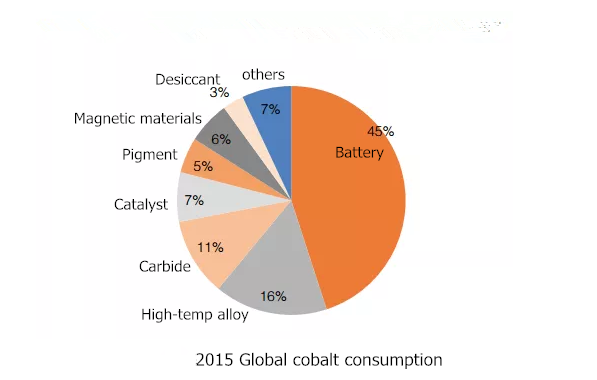What’s the effect of Co for carbide alloys?
Cobalt (Co) is a magnetic and scarce metal element. Cobalt resources are widely but imbalanced in the world. The reserves of Congo (DRC), Australia and Cuba account for 70% of the total global reserves, of which Congo accounts for 47.89%. Cobalt resources are mostly associated with copper-cobalt ore, nickel-cobalt ore, arsenic-cobalt ore and pyrite deposits.

As one of the important strategic resources, Co plays an important role in many applications. Cobalt alloys or mixtures of metals, make up half the cobalt used each year. Currently, the largest consumption and application of cobalt are mainly lithium battery, of which the positive electrode material is lithium cobalt oxide. In addition, Cobalt is also used in the traditional areas of super heat-resistant alloys, tool steels, and type of magnetic materials. The cobalt compounds are mainly used as catalysts, desiccants, reagents, pigments and dyes, which is essential for industrial processing.
In cobalt-based alloys, the addition of Co increases strength and hardness especially the red hardness, permits higher quenching temperatures. It also intensifies the individual effects of other major elements in more complex steels. The consumption and application of carbide alloys are the Tungsten carbides. It is mainly used for cutting tools, molds, cobalt heads, nozzles, perforating tools and corrosion-resistant and wear-resisting parts, such as sealing rings, cylinder linings, ball-point pens, etc.
Cutter steel with a certain amount of cobalt has good wear resistance and cutting performance. Cobalt combines other metal carbide grains in the alloy composition to make the alloy more ductile and less sensitive to impact. This alloy is welded to the surface of the parts, which can increase the service life of the parts by 3-7 times. Sterlite carbide containing more than 50% cobalt will not lose its original hardness even if heated to 1000 ℃.
The cobalt-based alloy still shows good performanceunder high temperature above 1038 ℃, especially used for the production of high temperature engines and steam turbines, so it is widely used in aerospace and modern military field. The use of cobalt-based alloys containing 20-27% chromium in the structural materials of aero-turbine engines can achieve high oxidation resistance without any protective coating. A thermal-medium turbine engine in a nuclear reactor heating studio can operate continuously for more than one year without maintenance.


